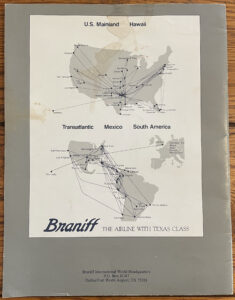Robert Blake. LAT. THR.
Yes, yes, “Baretta” and Bonny Lee Bakley. Also: “The Court of Last Resort”, “The F.B.I.”, “Electra Glide in Blue”, and “12 O’Clock High” among other credits. I’ve seen “In Cold Blood” but it was a long time ago. (I think I actually rented it on VHS.) I’d like to see it again: my recollection is that it was an excellent adaptation of what I consider to be a very good book, with some astonishing cinematography.
I can’t tell if Blake was the last surviving “Our Gang” member or not. If he wasn’t, he was certainly pretty darn near being the last one.
(And on a side note: “Fred” was actually played by two different Triton cockatoos: “Lala” and “Weird Harold”. “Weird Harold” was a “stunt double” that they only used when “Fred” was flying. I don’t know if either one is still alive, but the San Diego Zoo website claims that, with proper care, cockatoos can live anywhere from 60 years to a full century.)
The Reno Air Races. At least, in their present form. (Hattip to FotB RoadRich.)
The first major step in its demise happened Thursday when the Reno-Tahoe Airport Authority’s board of trustees voted unanimously to authorize its president and CEO, Daren Griffin, to negotiate final terms for the event.
It calls for the event this year from Sept. 13 to 17 to be the final air race at Reno-Stead Airport, with an air show in 2024 to celebrate its 60th anniversary.
But:
Although the Stead location is off the table, the Reno Air Racing Association – which organizes the event – sent out an email Thursday afternoon saying, “We are committed to finding a new location so that the event can continue. In fact, we are currently exploring several other possible locations to host the event in the future but it starts with making this year’s event the biggest and most successful it can be.”
Among the challenges cited in this decision was an increase in insurance costs for the event from $780,000 to $1.3 million and regional growth that makes hosting it at Reno-Stead Airport more challenging.
I’ve been to Reno fairly recently, but have never been to the air races. (Always wanted to go, though.) I hope they find a new location. But I’m having a lot of trouble, just based on what I saw when I was in the area, visualizing a location that has the required infrastructure and space to support all those planes, as well as having enough hotels/motels/campgrounds to house the crowd coming in for the races. Perhaps the plan is to move to another location in Nevada? Or out of Nevada? I have a vague memory that there was talk about doing air races in South Texas some time ago…

